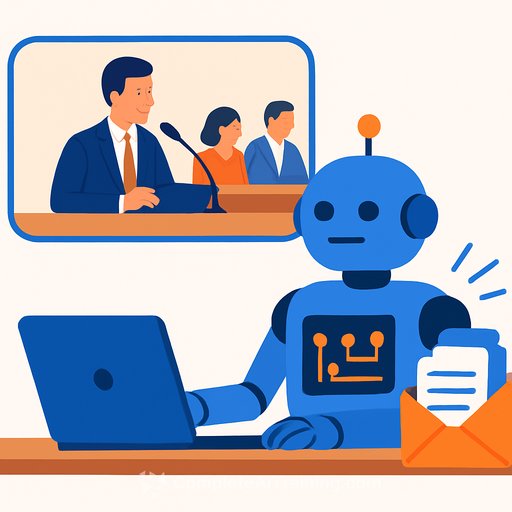AI is quietly speeding up public oversight in Hawaiʻi
A Hawaiʻi-based think tank has built an AI tool that listens to public meetings, transcribes the audio, and summarizes what happened. Called Open Hearings, it tracks 26 government bodies - from county councils to neighborhood boards - and sends a daily digest of the previous day's actions.
The goal is simple: reduce the time officials, staff, and the public spend sifting through hours of testimony and deliberation, while keeping the source audio and context a click away.
What Open Hearings does
The tool "plugs in" to official hearings, generates transcripts, and produces quick summaries. Users can ask it questions like, "When was the key vote?" or "How did testifiers feel about the proposal?" and jump to the exact timecode.
It's not built only for Hawaiʻi, but the team steered it to recognize common Hawaiian words and lawmakers' names. Daily email briefings help users scan what happened without sitting through late-night sessions.
Why this matters if you work in government
- Faster situational awareness: Staff can scan summaries, then verify details in the transcript or audio before briefings or floor sessions.
- Better public access: Residents who miss a meeting can catch up quickly and reference specific moments by timecode.
- Lean operations: Less manual note-taking and fewer hours spent monitoring routine updates.
- Stronger records practices: Transcripts and timestamps make it easier to cite what happened and when.
AI output still needs a human check. The team behind Open Hearings treats summaries as a starting point and uses the original recording to confirm key details.
How to pilot this responsibly
- Set a verification step for any fact used in policy memos, agendas, or press materials.
- Keep a clear chain from summary to transcript to source audio so anyone can audit the record.
- Coordinate with clerks and legal teams on records retention, discovery, and accessibility requirements.
- Publish a short "How we use AI" note so the public understands what's automated and what's reviewed by staff.
- Track impact: hours saved, faster responses to inquiries, and fewer missed items across long agendas.
Questions to ask your team or vendors
- Accuracy: How does it handle accents, cross-talk, and common Hawaiian terms?
- Timecodes: Can I jump to the exact moment of a motion, amendment, or vote?
- Security: Where is audio stored, for how long, and who can access it?
- Auditability: Are there logs showing what was summarized, when, and by which model version?
- Cost: What's the real cost per meeting hour, including storage and staff review?
Early takeaways from Hawaiʻi
Open Hearings started as a practical fix. After sitting through a midnight session where a tax hike passed, the project lead asked: there has to be a better way. Programmers built a system to listen, transcribe, summarize, and email daily recaps.
It's experimental by design. If it doesn't deliver value or draws complaints, the team says they'll pull it back. For now, the focus is simple: get reliable, searchable context into the hands of people who need it.
Resources
- Hawaiʻi Sunshine Law overview (Office of Information Practices)
- AI courses by job role - practical paths for public-sector teams
Bottom line: Automated transcripts and summaries won't replace the record, but they can make it far easier to find the signal in long hearings. With a clear verification step and good governance, this is a workable upgrade to how government tracks its own work - and how the public sees it.
Your membership also unlocks:






